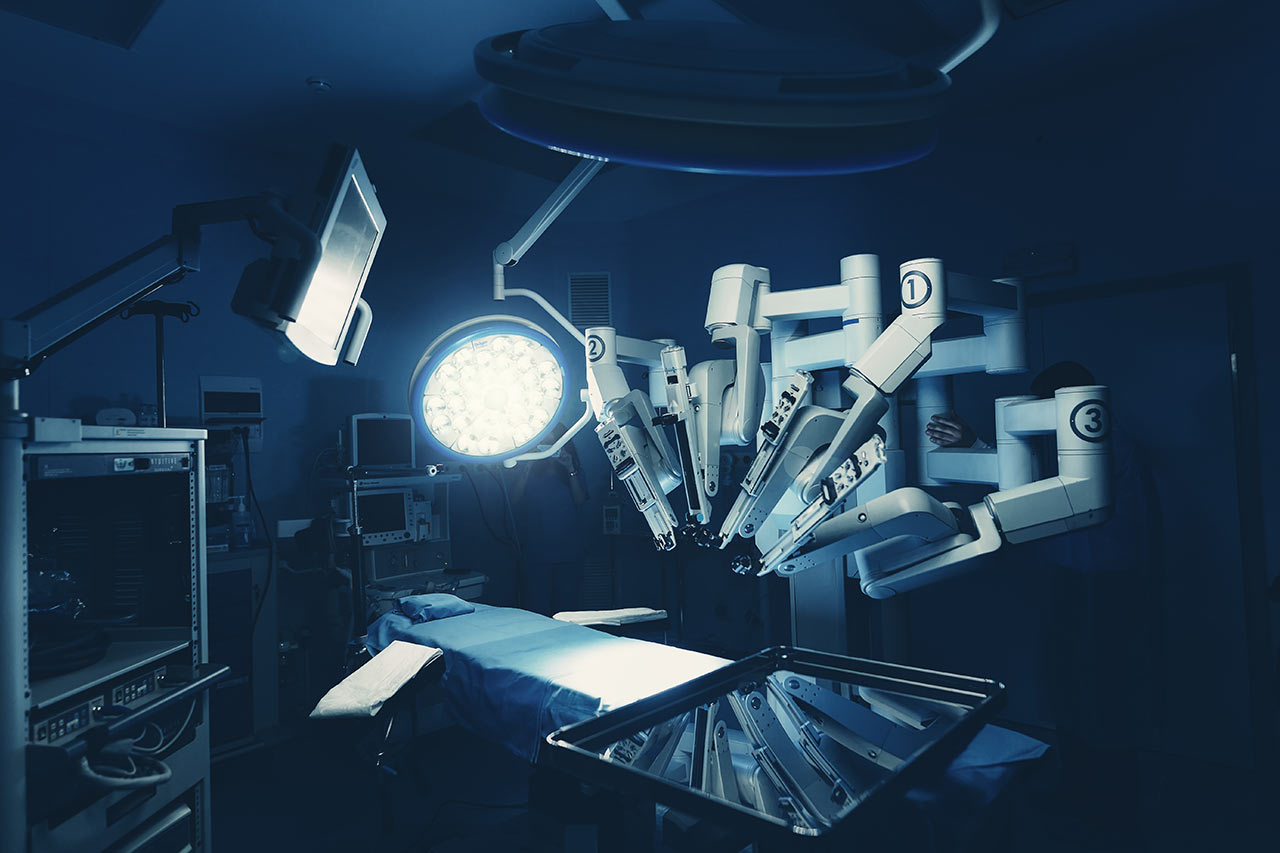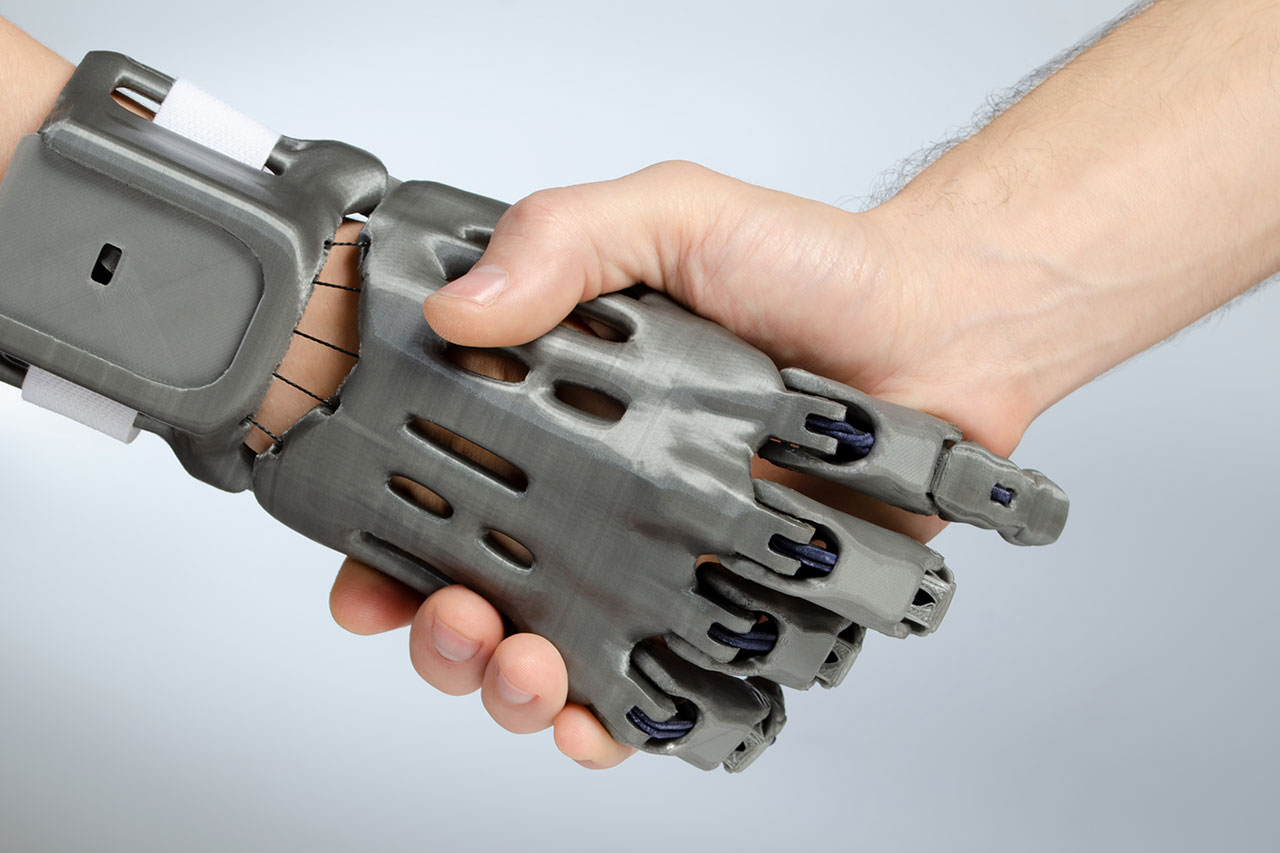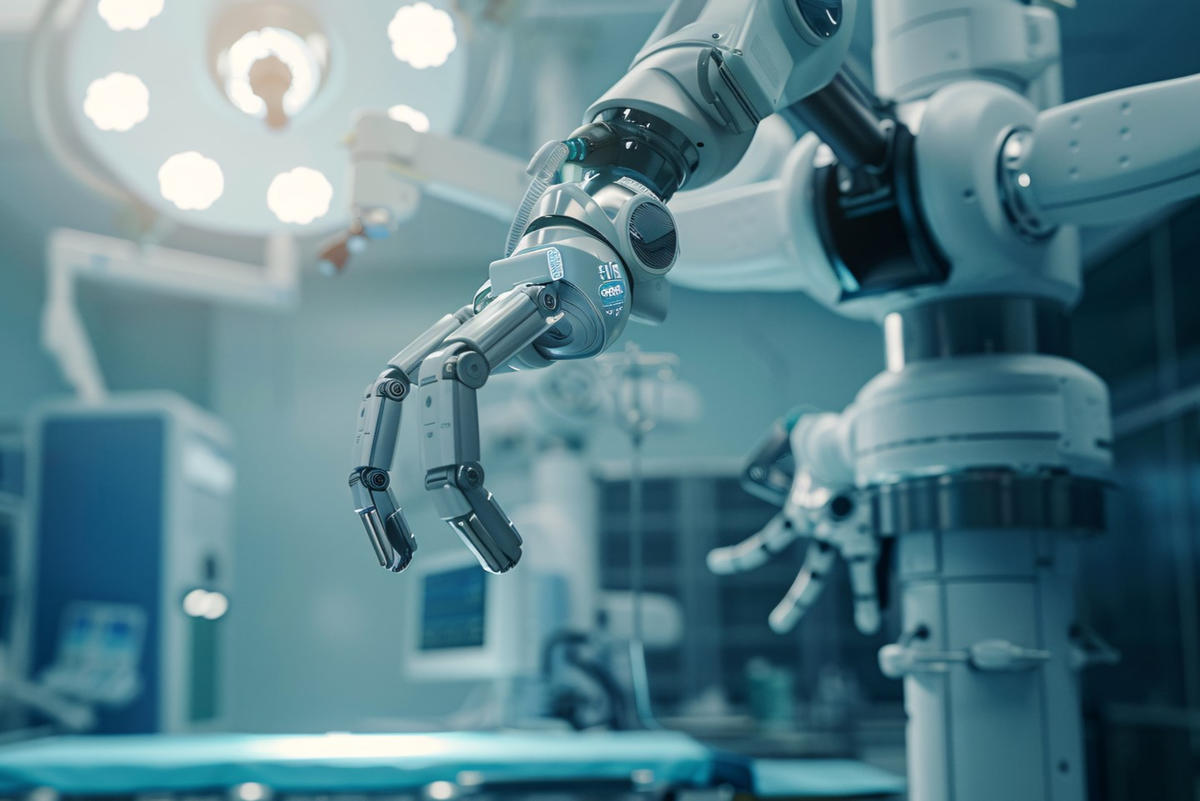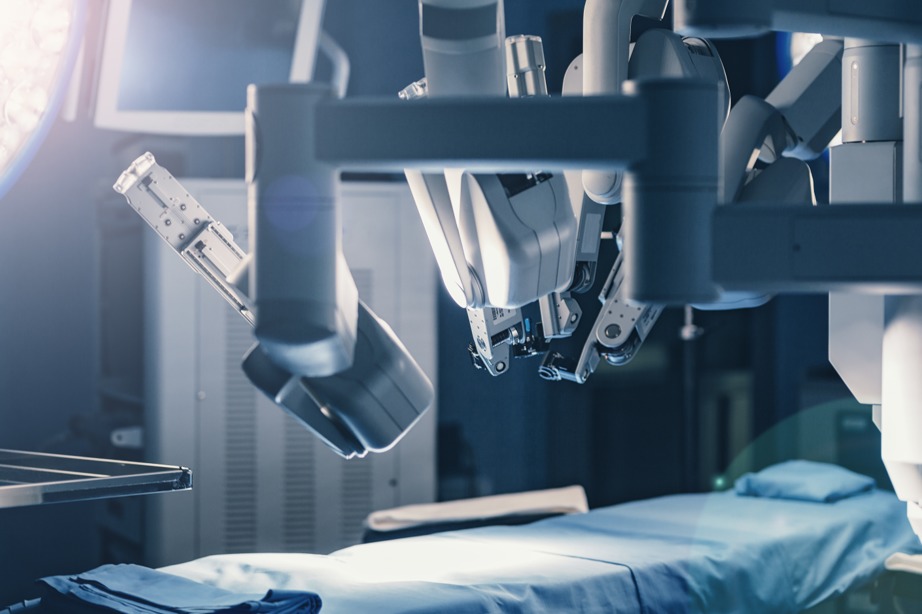Robotics in surgery: the genesis
The original idea to develop robots for surgery came in the 1970s, when NASA envisioned robots that could be controlled remotely to provide medical assistance to astronauts in missions. This failed, mainly because of the large distance separating earth and astronauts in space, leading to time delay in the operations. The idea was not fully realized and shorter distance solutions on earth were investigated.
As seen with many innovations, first developments in robotics for surgery happened in the military. In the 1980s, the US military first developped prototypes for robots that could be remotely controlled to operate on soldiers. It was clear to the military that telesurgery would enable medical assistance and treatment to soldiers in the field, while increasing safety.
Finally, in 1984 the first robot-assisted orthopedic surgery took place at UBC Hospital in Vancouver. The main role of the robot, named Arthrobot, was to hand the surgical instruments to the surgeon following a voice command. One year later, over 60 arthroscopic surgeries using Arthrobot could be counted.
Robots used in surgery today
Da Vinci surgical system
We have come a long way from Arthrobot, and especially with the Da Vinci surgical system that has operated on over 7 million patients worldwide since its commercialization in 2001. It is a real success story accomplished by the American company Intuitive Surgical with around 5.500 Da Vinci robots operating in hospitals across the world. Da Vinci robots enable minimally invasive surgeries and are mainly used for operations which require a high precision hard to achieve for humans, including prostatectomies, gynecologic surgeries, and increasingly also cardiovascular surgeries (e.g. mitral valve repair).
What are the robotic surgery benefits? Indeed larger precision and dexterity as well as their ability to access especially narrow areas are the first advantages that come to mind when thinking of surgery robots. Yet, surgery robots may also be used for other purposes, such as guiding the surgeon through the operated zone or preventing the surgeon from touching sensitive areas. Even though Da Vinci surgical systems are still the gold standard to many hospitals, mainly because they have already been present a long time in the OR, other surgery robots from newcomers in robotic surgery companies have been gaining momentum in the recent years.
New surgery robots from robotic surgery companies
- Robocath developed R-One, a robot enhancing the surgeon’s movement for percutaneous coronary interventions (PCI). R-One enables remote delivery and manipulation of coronary guidewires and stent/balloon devices. The French company is also active in developing tools, both infrastructure and interface, allowing remote surgeries. In January 2021, Robocath realized the first remote vascular surgery in vivo in Europe. With this PCI, the company successfully demonstrated that a surgeon in Caen could operate on a pig 120 km from him, in Rouen, without significant time delay. These solutions enabling remote surgeries are an incredible opportunity to alleviate medical deserts.
- Stryker developed Mako, a surgery cobot (robotic-arm) enabling more predictable surgeries when performing joint replacement, mostly on the knee. Preoperative plans are defined before the surgery with the patient’s anatomical information incorporated into the robot’s software. Mako allows almost perfect placement of the orthopedic implant specific to the patient’s anatomy, therefore allowing for fast recovery and better function for the patient in the long-term.
- MedTech developed Rosa, which is referred to as a medical GPS. Rosa has the ability to operate in very sensitive areas of the brain and spine, especially to perform biopsies and implant electrodes. With enhanced preoperative preparation, surgeons are able to prepare themselves and match the robot’s movements to the patient.
Read also : The benefits and challenges of telesurgery to overcome the lack of medical teams in remote areas
Robotics in surgery: what’s next for robotic surgery companies?
Robots-assisted surgery is a strong growing trend, with major players such as Johnson & Johnson or Siemens undertaking large investments in the field. Today robots enable surgeons to reach areas hardly reachable by humans. Tomorrow, nanorobots will enable surgeons to reach areas totally unreachable via other means. Many types of surgeries will benefit from working at an even smaller scale with those surgery robots.
Neurosurgery is a field particularly well suited to benefit from nanotechnology innovations. Nanodevices prepare the ground for more precision and control, for example for the reconnection of nerves. New developments of devices of the nanoscale allow to manipulate axons individually. These steps of restoring connectivity to transected axons are fundamental to restore function.
Another field that could benefit from surgery nanorobots is oncology, and especially with the mapping of tumor margins. With the integration of nanorobots in tumor resection surgeries, the detection and mapping of tumor margins during surgery can be significantly improved. The idea is to administer nanorobots intravascularly to the patient that will detect tumorous tissue margins and metastatic areas using chemical sensors programmed to detect different levels of E-cadherin and beta-catenin. Nanorobots conglomerate on tumor tissue and send an electromagnetic localizing signal to the surgeon for further researches.
The evolution of robotics in surgery happened quite fast. From first trials in the 1980s to today, robots have already made their way into hospitals, with over 1500 US hospitals equipped with the Da Vinci surgical system. The future of robots in the OR sounds just as promising in terms of capabilities with the development of nanorobots. However, these innovations come along with several question marks such as the robots’ autonomy level, patients’ acceptance, as well as legal and ethical barriers. Even though robots will not fully replace surgeons in the OR anytime soon, they will definitely keep on assisting them and enhancing their abilities.
At Alcimed, we are actively investigating new opportunities and innovations in telemedecine and robotic surgery and we are ready to explore them for our clients!
About the author
Roxane, Consultant in Alcimed’s Healthcare team in Germany



